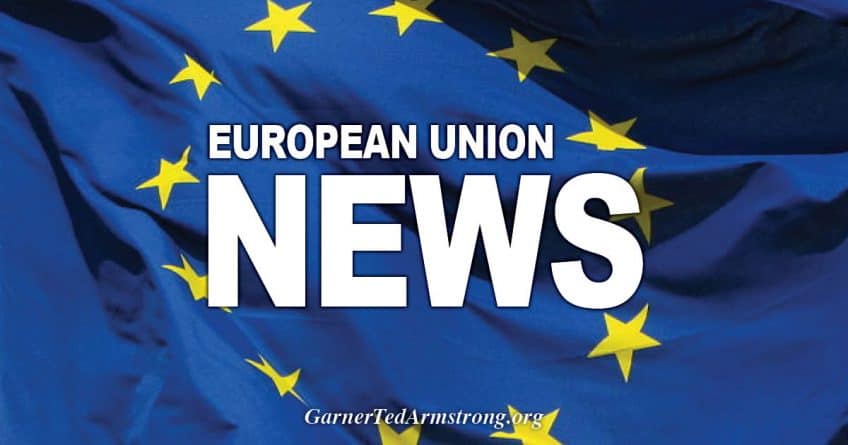(CNN) The risk of modern slavery has risen in 20 member states of the European Union, according to a new global ranking released yesterday.
The Modern Slavery Index 2017, compiled by risk analytics company Verisk Maplecroft, pinpointed five EU countries — Romania, Greece, Italy, Cyprus and Bulgaria — as posing the highest risk. It identified these countries as key entry points for migrants who are extremely vulnerable to exploitation.
Defining modern slavery as an “umbrella term for slavery, servitude, trafficking in persons and forced or compulsory labor,” the index measures the strength of laws, the effectiveness of law enforcement and the severity of violations in 198 countries.
The report found 60% of countries ranked in the “high” or “extreme risk” category.
The idea is that businesses will use the annual index to identify where the risk of modern slavery is greatest across their business operations and supply chains, so they can better target their resources and efforts to prevent exploitation.
Migrants at EU ‘entry points’ most at risk
Verisk Maplecroft Human Rights Analyst Alexandra Channer believes the influx of undocumented migrants entering the EU has resulted in increased risks of modern slavery.
“Migrants are already vulnerable when they begin their journey — they’re generally fleeing countries of violence and extreme poverty,” she told CNN. “Generally they’re going into the hands of people smugglers and then very quickly being trapped in the hands of trafficking gangs.
“The chances are that before they even enter the workplace they’re already in conditions of modern slavery.”
In response to the report, the European Commission highlighted the steps it is taking to fight human trafficking.
“We are aware the migration crisis has been exploited by criminals who target the most vulnerable — women and children,” a spokesperson for the European Commission, Tove Ernst, told CNN in an email.
“The EU has a strong legal framework to fight human trafficking and, together with the EU Anti-Trafficking Coordinator, we work to improve coordination between EU institutions, agencies and States as well as non-EU countries and international actors to prevent and fight trafficking,” she said.
The Commission said it is tackling the issue through its “hotspot approach” to assist member states –namely Greece and Italy — that are facing migratory pressures at the EU’s external borders.
“The Commission and EU Agencies support national authorities to better manage the migration flows and ensure that all persons arriving are identified, registered and channeled through the right procedures, with particular attention being paid to the most vulnerable migrants,” Ernst said.
Romania and Italy worst reported violations
Romania saw the sharpest rise in risk globally compared to the 2016 Modern Slavery Index. The country moved 56 places down in the ranking toward the “extreme risk” end of the spectrum to 66th most at risk. The report found both Romania and Italy (which fell from 149th to 133rd in the rankings) to have the most damaging reported cases of modern slavery in the EU.
The Romanian National Agency against Human Trafficking in Persons (ANITP) outlined its anti-trafficking efforts in an email.
“We are constantly concerned, not only in order to ensure the functioning of the national anti-trafficking system, but also to improve the situation,” ANITP spokesperson Ciprian Ghituleasa told CNN.
There were 252 convictions for human trafficking in 2015 and 333 convictions in 2016, according to ANITP. Of these, at least 70% were sentences by imprisonment.
ANITP said that the high number of convictions reflects Romania’s institutional capacity to investigate crimes of trafficking in persons as well as the capacity of criminal constitution bodies.
“The increased demand for sexual services and cheap labor, the interest of business environment in obtaining big profit with low investments, represents factors that directly influence the development of criminal networks’ activity in the field of human trafficking,” Ghituleasa said.
“The phenomenon is transnational, so we need broad vision between Origin-Transit-Destination countries.”
CNN contacted Italian officials but did not receive a response prior to publication.
Panos Kakaviatos, a spokesperson from the Council of Europe, a human rights organization consisting of 47 member states signed up to the European Convention on Human Rights, concurred with many of the findings of the index.
“We welcome this kind of reporting because it dovetails with our concerns,” he told CNN. “Persons who escape persecution and conflict in search of protection are definitely vulnerable.”
Measuring the risk
The Modern Slavery Index is constructed using independently researched and scored data categorized into three pillars: a country’s commitment to eliminate modern slavery, its ongoing efforts to eradicate it through enforcement, as well as the prevalence of reported violations.
It uses open-source data and information obtained from third party sources such as the U.S. State Department, Human Rights Watch, Amnesty International and Freedom House to determine the rankings, explained Channer.
However, Channer admits that finding evidence for some countries can be extremely difficult.
“A huge problem for anyone trying to assess the risk of modern slavery is that this is a criminal activity, it’s hidden, even though it’s a billion dollar business,” she said.
The riskiest places in the world
Outside of the EU, Turkey slipped into the “high risk” category of the index, indicating the second largest increase in risk (from 110th to 58th) in the world. This, according to Verisk Maplecroft, is owing to the flood of migrants from the Syrian war entering the informal workforce, coupled with Turkey’s restrictive work permit system.
Turkish officials from the Social Security Institution declined to comment on the report.
Turkey ratified the Convention on Action against Trafficking in Human Beings in May 2016, Kakaviatos confirmed.
In Asia countries with large manufacturing industries including Bangladesh, China, India, Indonesia, Malaysia, Myanmar, the Philippines, and Thailand — continue to feature in the “extreme” or “high risk” or categories of the index.
However, the report found there to be “green shoots of progress” in India (moving from 15th to 49th) and Thailand (from 27th to 48th) on account of better efforts from governments to enforce slavery.
“There has been some evidence that the governments [in India and Thailand] have been more effective at prosecuting trafficking cases, investigating and identifying victims, so better enforcing laws they have on the books,” explains Channer.
“The trouble is that modern slavery is so endemic in both India and Thailand … so there’s a long way to go.”
Cambodia showed slight progress in the 2017 index, moving up 19 places from 61st to 80th.
The ten highest risk countries in the world as rated on the index include: North Korea, Syria, South Sudan, Yemen, Democratic Republic of Congo, Sudan, Iran, Libya, Eritrea and Turkmenistan.
Source: http://www.cnn.com/2017/08/11/world/modern-slavery-risk-index/index.html
[Disclaimer]







